Light pollution, a growing concern for astronomy enthusiasts, disrupts your ability to enjoy the night sky and adversely affects health and the environment.
However, the brightening of the night sky due to excessive artificial light hinders your stargazing and negatively impacts wildlife and your health, leading to sleep disorders, obesity, and even cancer.
In this article, I’ll explore the world of light pollution’s origins, environmental effects, and its impact on astronomy. You’ll also find practical tips on combatting light pollution in your community and rediscovering the night sky’s beauty.
What are the main light pollution effects?
Light pollution leads to disruptions in stargazing, adversely affects wildlife, and poses health risks such as sleep disorders and increased cancer risk.
Let’s dive right in.
Recommended For You
WHAT IS LIGHT POLLUTION?
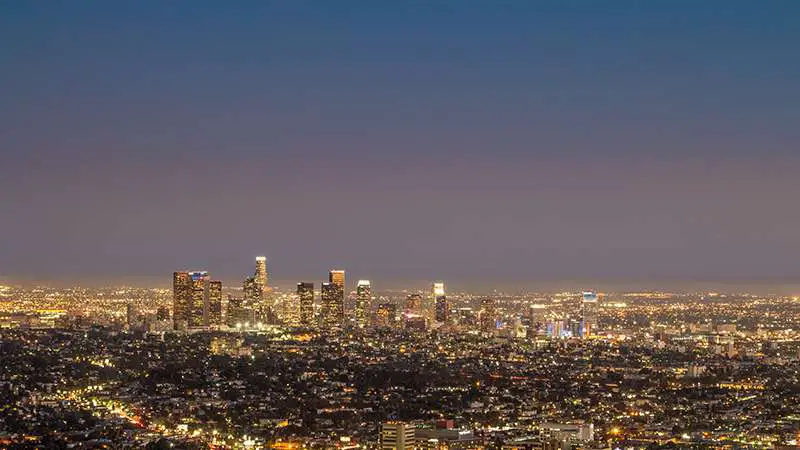
Light pollution is excessive or intrusive artificial light. It’s a growing problem in many cities as they get bigger and brighter. While some types of light pollution can be natural (like auroras), humans cause most of it.
Most of us are familiar with light pollution in its simplest form: brightly lit cities at night. But light pollution is more than just a nuisance.
What is Light Pollution?
Light pollution is the excessive or intrusive artificial illumination that disrupts the natural darkness of the night sky. Various sources of artificial light cause it and harm the environment and our ability to observe celestial wonders.
It is a global problem. Light pollution severely affects our health, wildlife, and energy consumption.
WHEN DID LIGHT POLLUTION START?
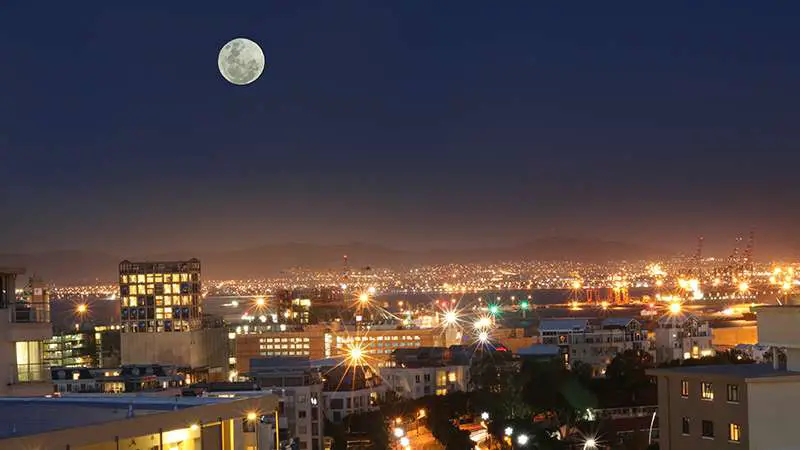
Light pollution started becoming a serious problem in the mid-20th century as cities grew and artificial light became more common. As urbanization continues to expand, so does the reach of light pollution. The growth of cities intensifies the issue, making it crucial to address and implement measures to protect our natural nightscapes.
As light pollution has increased, so have its effects on the environment and human health.
Some of the earliest efforts to address light pollution date back to the 1950s. However, it was in the 1970s that light pollution started to receive serious attention from environmentalists and policymakers.
Understanding the Earth’s atmosphere and its interaction with artificial light is essential in mitigating light pollution’s effects. Factors such as atmospheric scattering significantly affect how light pollution affects our view of the night sky.
In 1972, the Environmental Protection Agency (EPA) released a “Light Pollution: A Report on Obtrusive Lighting in the United States.” This report defined light pollution as “any adverse effect of artificial light” and described its impacts on human health, wildlife, and astronomers’ ability to study the stars.
In 1974, UK astronomer Patrick Moore founded the Campaign for Dark Skies, now known as The International Dark-Sky Association (IDA). The IDA protects dark skies globally through education, advocacy, and research.
Human overpopulation contributes to the spread of light pollution, as densely populated areas require extensive lighting infrastructure. It’s imperative to balance urban growth with measures to reduce the impact of artificial light on the night environment.
In 2001, Torino hosted the first-ever World Conference on Illumination (CIE). This event brought together lighting experts worldwide to discuss ways to reduce light pollution and its harmful effects.
Since then, awareness has continued to grow, and numerous initiatives are underway to combat it. For example, many cities have implemented ordinances that restrict or prohibit certain lights from adding to the sky brightness.
WHAT IS LIGHT TRESPASS?
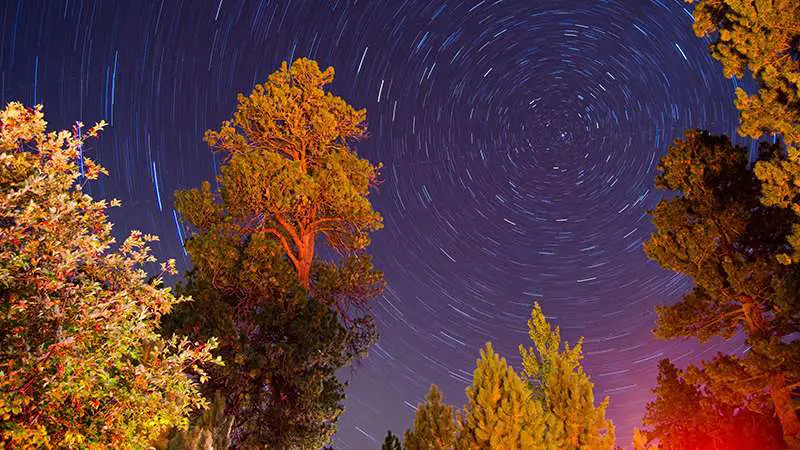
What is light trespass?
Light trespass occurs when unwanted artificial light spills into your property, causing glare and contributing to light pollution. It can disrupt your sleep, be annoying, and have negative environmental impacts. Discover ways to reduce it and enjoy a darker, more peaceful night.
Waster light that causes glare and sky glow is light trespass. It unnecessarily contributes to the overall natural sky brightness. It also wastes energy.
Light trespass occurs when light from a security light, street light, or other artificial light source shines into your home or onto your property. This can be annoying, disruptive, and even dangerous. It can also waste energy and contribute to light pollution.
WHAT ARE SOME WAYS TO REDUCE LIGHT TRESPASS?
There are a few different ways that you can reduce light trespass.
One way is to install motion-activated lights. This way, the light will only come on when someone or something is present and turn off when there is no activity.
Another way to reduce light trespass is to use shielding. If you install a cover over light fixtures or use a light with a built-in shield, it reduces any excessive glare spilling into the sky.
You can also ensure the light is only as bright as is necessary.
HOW DOES LIGHT POLLUTION AFFECT US?
How does light pollution affect us?
Light pollution disrupts our sleep patterns, increasing the risk of sleep disorders. It also contributes to obesity, hormonal changes, and even cancer. Moreover, it impacts mental health, leading to depression and anxiety. Understanding its effects is crucial for our well-being.
Light pollution has a few different adverse effects. The most direct is that it can cause light trespass, as mentioned above.
It also causes glare, making it difficult to see at night. It washes out the stars in the sky, making enjoying a clear night view harder.
It also has an environmental impact. For example, it can disrupt the natural migratory patterns of birds and other animals.
EFFECTS ON OUR ENVIRONMENT AND WILDLIFE
Light pollution has a few different effects on our environment and wildlife.
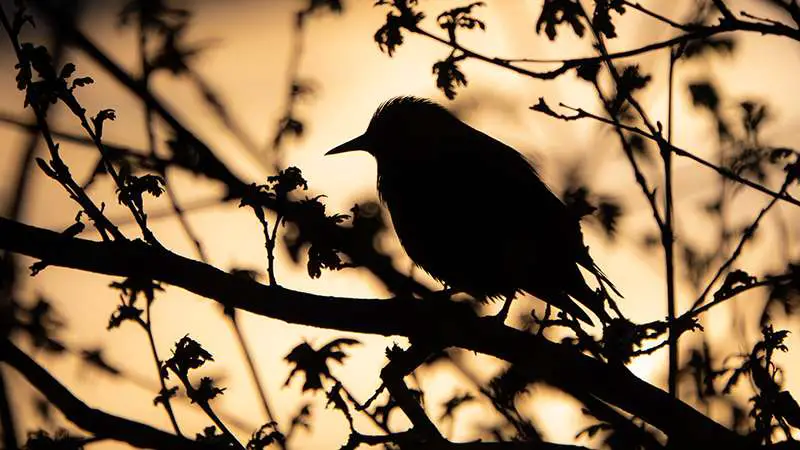
It can disrupt plants’ natural day and night cycles and the circadian rhythm of birds and other animals and insects. This can lead to problems with feeding, mating, and other essential animal activities.
It can cause changes in an animal’s behavior, making them more active at night and less active during the day.
In addition to affecting animals, it also negatively affects plants. For example, it can cause premature leaf growth in trees and affect the plant’s overall health. Additionally, it can interfere with photosynthesis, which is essential for plant growth.
It can also impact our health. Exposure to light at night can lead to health problems, including insomnia, depression, anxiety, and even cancer.
The natural environment suffers greatly from light pollution. It disrupts the behavior of nocturnal animals, interferes with plant growth, and threatens the delicate balance of ecosystems. Understanding these impacts is crucial to our efforts to preserve the natural world.
what are the effects of light pollution on humans
Light pollution has several adverse health effects on humans. These include:
Disruption to circadian rhythms: Exposure to unwanted light at night can disrupt our natural sleep/wake cycle, causing insomnia and other sleep disorders.
Increased risk of obesity: Exposure to light at night can increase the risk of obesity, as it can lead to changes in metabolism and hormones.
Increased risk of cancer: Exposure to light at night may increase the risk of certain types of cancer, such as breast cancer.
Negative impact on mental health: Some adverse mental health effects, such as depression, anxiety, and mood disorders, have been linked to light pollution.
Particulate matter in the atmosphere can exacerbate the effects of light pollution. Fine particles can scatter and amplify artificial light, contributing to sky glow and reducing our ability to see the stars. This interaction between particulates and light pollution underscores the need for comprehensive solutions.
WHAT IS SKYGLOW?
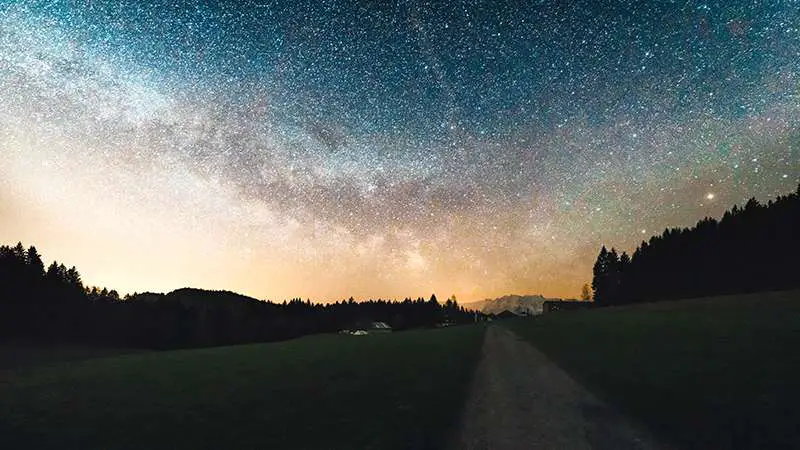
What is sky glow?
Sky glow refers to the brightening of the night sky over populated areas due to excessive artificial lighting. It’s caused by streetlights, advertising lights, and illuminated buildings, contributing to light pollution. Sky glow obscures celestial objects and affects our environment and well-being.
Sky glow is the brightening of the night sky over inhabited areas due to excessive light.
Streetlights, advertising lighting, and even city-illuminated buildings all cause sky glow.
In addition to causing light pollution, sky glow impacts astronomy.
The excess brightness can make it difficult to see faint nebulae and other deep-sky objects.
Sky glow is a significant problem in urban areas. Rural areas are also affected by sky glow from nearby cities.
Related article: Why is the Night Sky so Bright?
EFFECTS ON ASTRONOMY
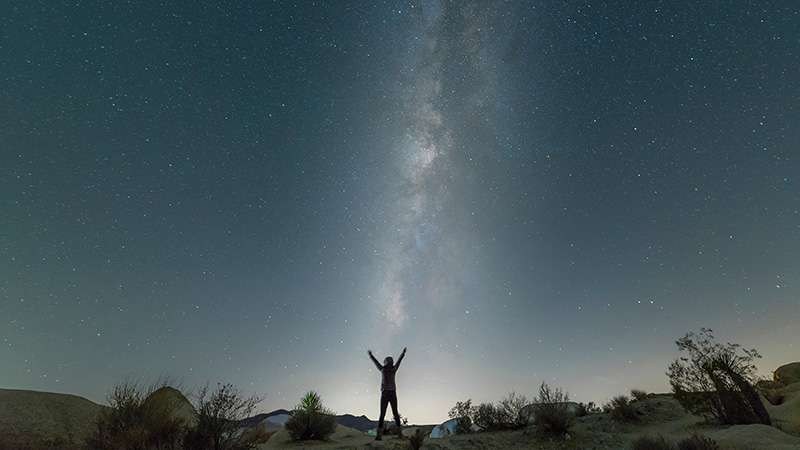
The impact of light pollution on astronomy is both direct and indirect.
Direct effects include the reduction of visibility of stars and other celestial objects due to glare from artificial lights. This can make it difficult or even impossible to conduct astronomical observations from urban areas.
In addition to its impact on professional astronomy, light pollution also affects amateur astronomers and stargazers. The brightening of the night sky can make it difficult to see faint stars and planets with the naked eye.
Light pollution can thoroughly wash out the Milky Way galaxy in extreme cases. Have you ever wondered if all the stars you can see are in the Milky Way?
I mentioned the indirect effects above, which include disrupting the hibernation and migration patterns of nocturnal animals and affecting the ability of plants to photosynthesize properly.
WHAT IS THE BORTLE SCALE?
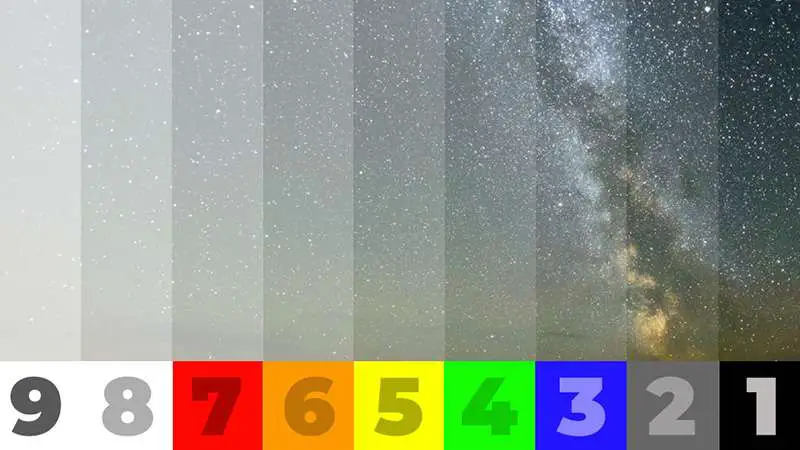
The Bortle scale is a numeric scale that rates the night sky’s brightness, from Class 1 (an “excellent” dark-sky site) to Class 9 (a “light-polluted” place). It was developed in 2001 by John Bortle, a retired amateur astronomer.
Class 1 sites are infrequent. These include places like Mauna Kea, Hawaii, two National Parks; Big Bend in Texas; and Death Valley in California. These are all remote areas with little or no artificial light pollution.
Class 2 sites are also quite rare; these include Great Basin National Park, Nevada; Medicine Lake Highlands, California; Mt. Rainier National Park, Washington; Craters of the Moon National Monument and Preserve, Idaho; and Arches National Park in Moab, Utah.
Class 3 sites are still considered dark by most astronomers’ standards. A few examples include three National Parks; Joshua Tree and Saguaro in the southwestern United States and much of Yellowstone.
Class 4 sites have noticeably more light pollution and require darker adaptation to see fainter stars. Some class 4 sites include Big Cypress National Preserve in Florida and Hovenweep National Monument in Colorado/Utah.
Class 5 skies have so much light pollution that the Milky Way is not visible to the naked eye under a truly dark sky. Most urban areas, like New York City, Boston, and Los Angeles, are class 5 or above.
Class 6 skies have even more. The constellation Orion can also barely be seen, even with its brightest stars. Most suburban locations are in this category.
Class 7 skies have so much light pollution that only the brightest stars and constellations are visible to the naked eye. The Big Dipper is visible, but little else. Many larger cities, such as London, Paris, and Mexico City, are in this category.
Class 8 skies have so much light pollution that only some brightest stars are visible to the naked eye; constellations aren’t visible. A few other bright stars and aircraft warning lights on tall structures (e.g., TV towers) may be visible. Many small towns and rural locations in industrialized countries are class 8.
Class 9 skies have so much light pollution that bright lights uniformly light up the entire night sky; even the Milky Way isn’t visible. Most rural locations in industrialized countries are class 9.
Amateur astronomers and astrophotographers use the Bortle scale to help them choose sites for observing or photographing the night sky. Light pollution activists also use it to raise awareness of the effects of artificial lights on the night environment.
DARK SKY RESERVES
What are Dark Sky Reserves?
Dark Sky Reserves are designated areas with minimal light pollution, offering unobstructed views of the pristine night sky. They are sanctuaries for stargazers, providing a glimpse of the cosmos in its natural splendor. Explore these remarkable places to experience the beauty of the night sky without artificial interference.
The International Dark Sky Association has been working since 1988 to preserve the night sky. As of 2022, the International Dark Sky Association has certified 195 dark sky places worldwide where light pollution is practically nonexistent. These places offer stargazers an opportunity to see the night sky in all its glory, free from city lights and other light sources.
The effects of light pollution on these reserve areas are minimal, as few artificial lights are present to disrupt nature. However, even in these pristine conditions, light pollution can still have a subtle impact on the ecology of an area. For example, some animals may avoid hunting or foraging in well-lit areas, affecting their populations.
Overall, dark sky reserves provide a small but essential refuge from light pollution for humans and wildlife alike.
STARGAZING
If you love looking up at the stars, you’re not alone. Check out my articles on the best places for stargazing in California and Sedona, and on the Hawaiian islands of Maui, Oahu, and Kauai.
If you’re new to stargazing, read my article What Do You Need To Go Stargazing?
Stargazing is a popular hobby for many, but it’s becoming increasingly more challenging. The brightening of the night sky is an issue.
It makes it more difficult to see stars and other celestial objects.
It can cause glare, which makes it harder to focus on objects in the sky.
If you love stargazing, do your part to reduce light pollution.
Turn off lights when you don’t need them, use energy-efficient bulbs, and support measures to reduce light pollution in your community.
AURORA BOREALIS
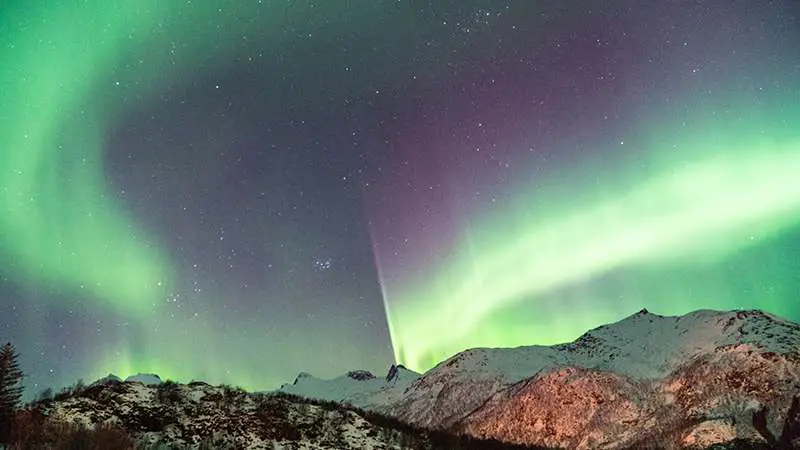
One of the most stunning natural light displays is the Aurora Borealis. Charged particles from the sun interact with the upper atmosphere to cause these colorful displays.
While the Auroras are visible from many places on Earth, the easiest is near the north or south poles. There is minimal artificial light pollution in these areas to obscure the view.
The best time to see the Auroras is during the dark winter months when the nights are the longest. However, they can be visible at any time of year if conditions are right.
With increasing light pollution, it is becoming more challenging to see the Auroras from populated areas. If you want to experience this natural wonder, it is best to head to a remote location away from city lights.
HOW TO REDUCE LIGHT POLLUTION

It is no secret that light pollution has become an enormous problem in recent years. The bright lights of cities can cause problems for the environment and human health. But there are things that we can do to reduce its effects.
While technology has brought numerous advancements, it has also been a driving force behind the proliferation of light pollution. From bright LED streetlights to excessive use of electronic screens, technological developments demand responsible usage to mitigate their impact on our nightscape.
How to reduce light pollution?
Reducing light pollution starts with simple steps like using energy-efficient lighting, shielding outdoor fixtures, and supporting light pollution ordinances. By being mindful of our lighting choices and advocating for responsible illumination, we can collectively dim the impact of light pollution and preserve our connection to the night sky.
One way to reduce light pollution is to use less energy. You can turn off unwanted light when unnecessary, use energy-efficient bulbs, and ensure your home is well-insulated.
We can be mindful of the outdoor lighting we use. Ensure that your outdoor lights point downwards so they don’t shine into the sky and cause glare and light pollution for your neighbors. Consider using motion sensor lights so they only come on when someone is outside – this can save a lot of energy (and money!).
We can all help raise awareness about the issue and its environmental effects. We can talk to our friends and family about it, write letters to our elected officials, and support organizations working to combat this growing problem.
HOW DO I DEAL WITH MY NEIGHBOR’S BRIGHT LIGHTS?
If your neighbors’ outdoor lighting keeps you from getting a good night’s sleep, there are a few things you can do to mitigate the problem.
Talk to your neighbors and see if they’re willing to adjust their light fixtures or timers so that the excessive light glare isn’t shining directly into your bedroom window. As a bonus, you will help them save energy!
If that’s impossible or they’re unwilling to make changes, you can try installing blackout curtains or blinds in your bedroom to help block out the light at night.
You can also buy a sleep mask while you sleep at night.
If all else fails, you can talk to your local municipality about enacting a light pollution ordinance in your neighborhood for outdoor lights.
LIGHT POLLUTION ACROSS THE US
Light pollution across the US: What’s the extent?
Light pollution affects two-thirds of Americans, hindering their view of the Milky Way. Its rapid increase poses environmental and health risks. This article explores the prevalence of light pollution, from urban areas like Los Angeles to rural locations, shedding light on a nationwide issue that demands attention and action.
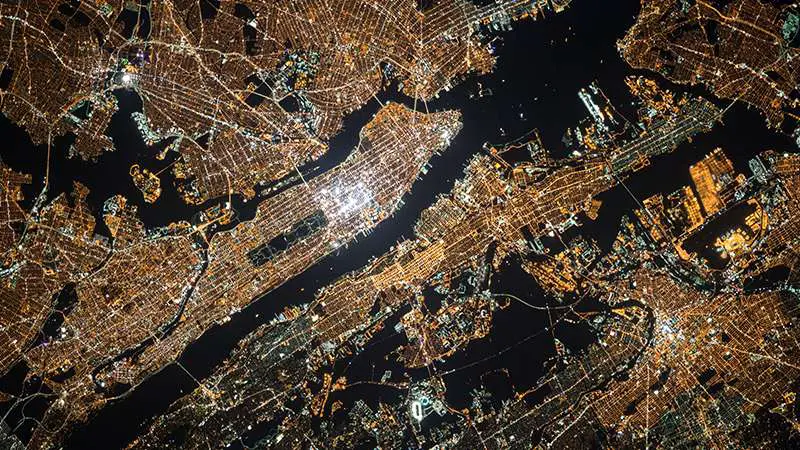
According to the National Park Service, “Two-thirds of Americans live in places where they can no longer see the Milky Way.” The NPS also reports that “light pollution has increased rapidly and dramatically over the last several decades.”
One significant contributor to light pollution has been the widespread use of incandescent light bulbs. Their inefficient design results in excessive energy consumption and unnecessary light emissions, exacerbating the problem of light pollution.
The National Park Service is working to reduce light pollution in our national parks. We are using energy-efficient fixtures and promoting the use of Dark Sky Parks, where you can experience the night sky in its natural state, free from artificial light pollution.
Some of the most affected areas include urban areas, such as Los Angeles and New York City. However, even rural areas are not immune from light pollution.
Frequently Asked Questions
What causes light pollution?
Excessive and poorly directed artificial lighting causes light pollution. When we use too much artificial light or aim it incorrectly, it scatters in the atmosphere, creating sky glow. This scattered light dims our view of the stars and leads to issues like light trespass and glare. Factors like urbanization, widespread outdoor lighting, and intense light sources like LEDs contribute to this problem. Understanding these causes is crucial to addressing and reducing light pollution.
Light Pollution Conclusion
Thank you for reading my article on Light Pollution Effects.
Unnecessary artificial light at night is a human problem. Our light sources cause issues for wildlife, from birds to sea turtles to other animals.
The good news is that more and more people are becoming aware of the problem and taking action.
You, too, can do your part to reduce its effects in your neighborhood. Local action for global impact!




